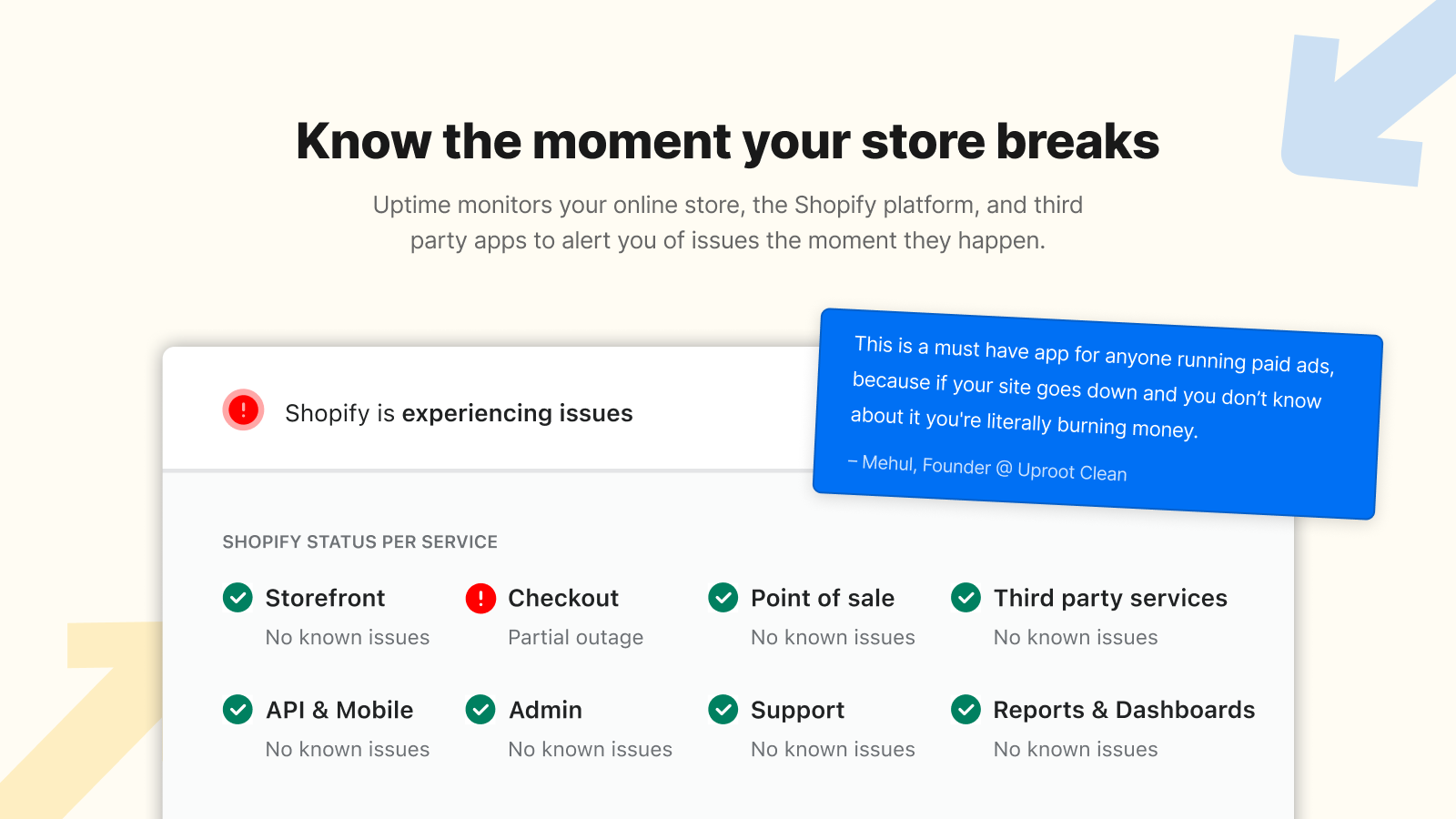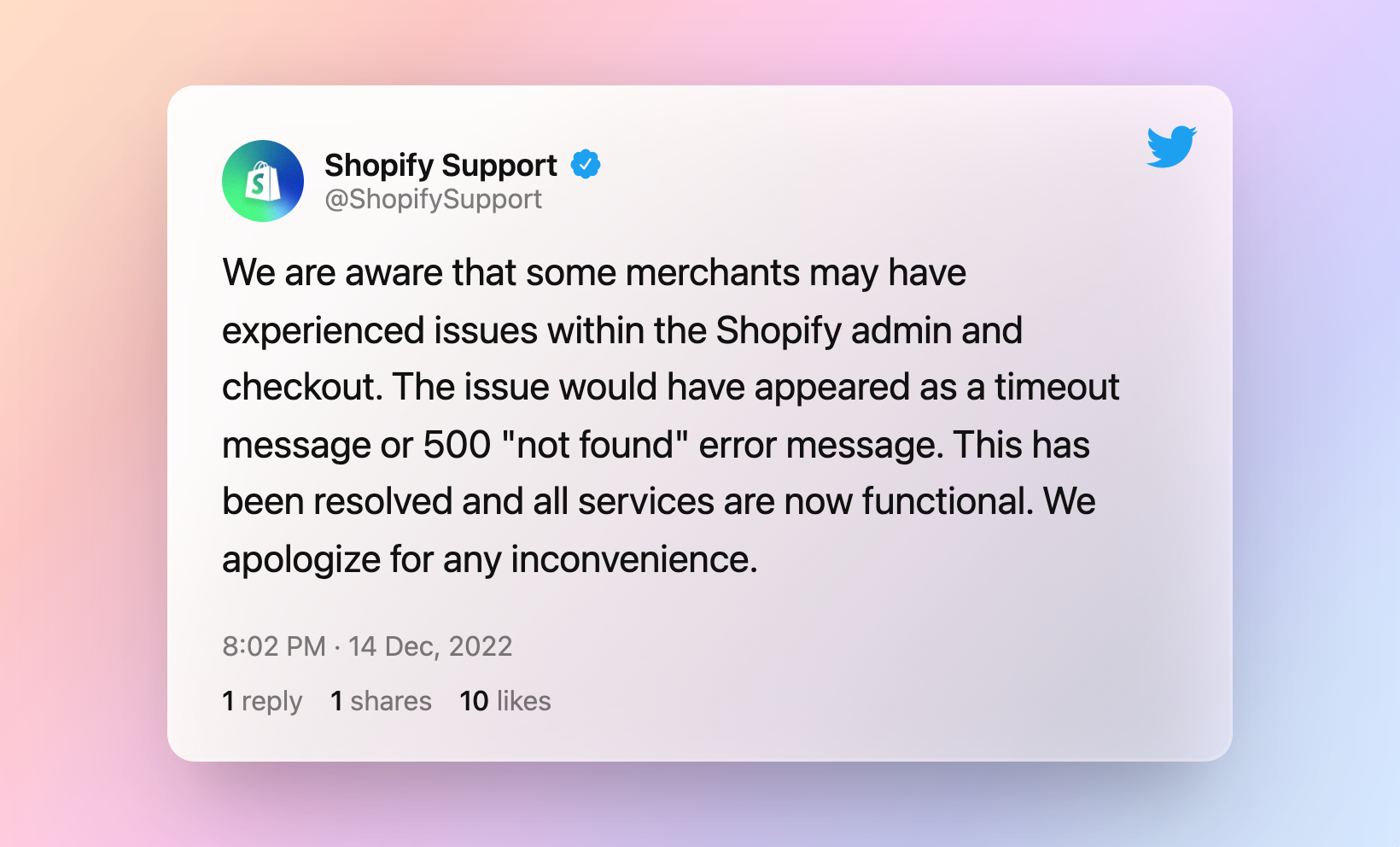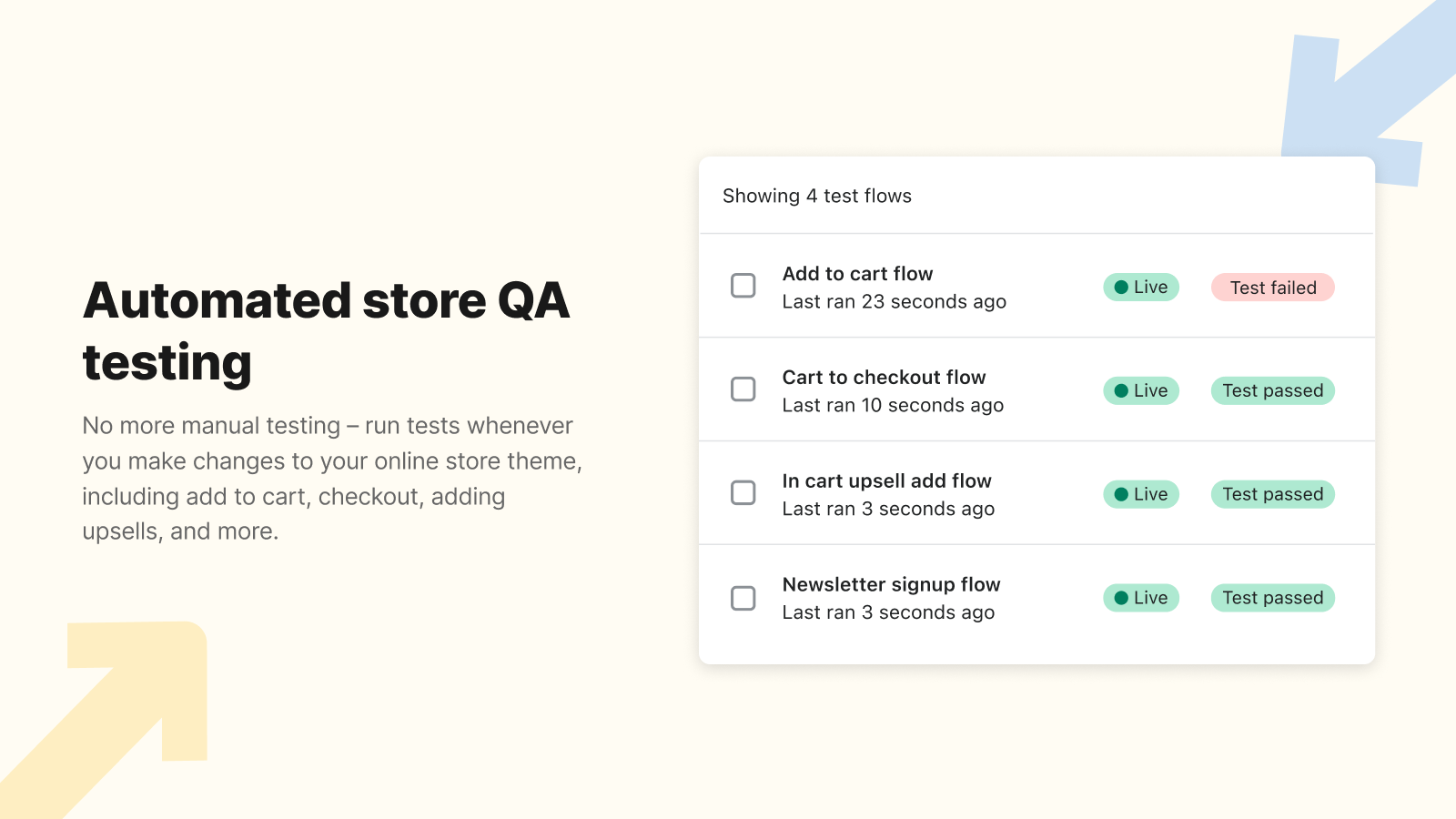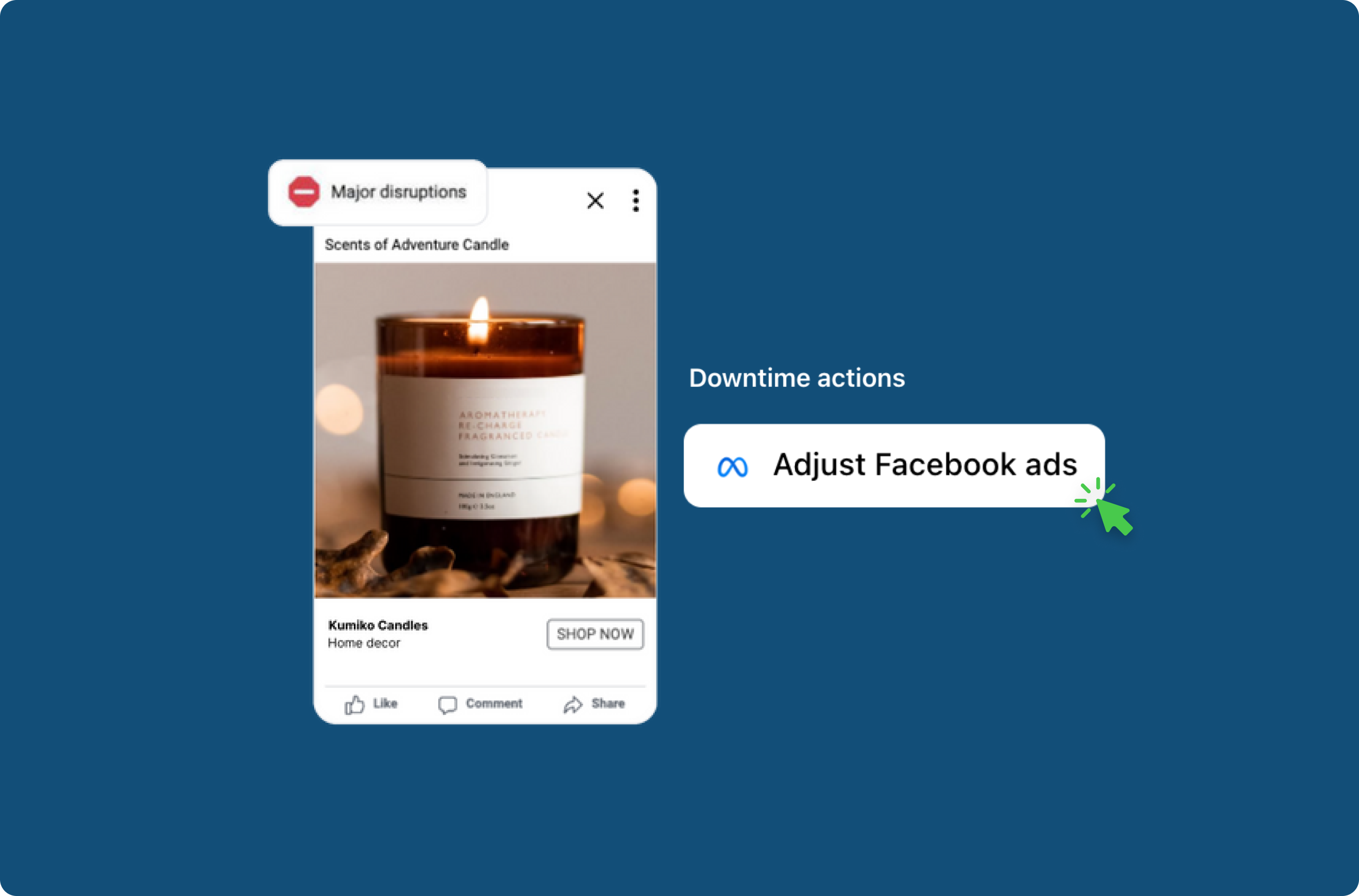Case study: Uptime catches silent Shopify outage hours before Shopify reports it
Uptime monitors the Shopify status page in real-time, alerting merchants the moment Shopify reports any sort of outage. In the last 30 days, Uptime has reported 7 instances of downtime across various Shopify services, including checkout, admin, point of sale, and reports & dashboards.

But as we learned on December 14th, not all Shopify outages are reported on the Shopify status page. In fact, Shopify stipulates on its status page that “Some issues affecting a small percentage of stores may not be reflected here.” But a small percentage of stores out of more than 2 Million merchants is still a large number of stores, which for some of our Uptime merchants meant losing tens of thousands of dollars during this outage.
That’s why Shopify status page monitoring alone isn’t enough to ensure your store is fully monitored against outages. More on that later, but first let's dig into what happened yesterday and how Uptime saved merchants time, money, and headache.
Silent Shopify Cart API outage
Around 4pm EST on Decemeber 14th, the Uptime team began noticing automated test flow failures across many online stores. Each of the test failures was getting stuck on the same step: the ability to add a product to cart.
After a brief investigation, we saw on each store that a 500 error was being surfaced when trying to add a product to cart, meaning it was an issue with Shopify’s services in relation to their Cart API.
We received an alert from Uptime that our automated test flows were failing shortly after the outage began. The Uptime team was super quick to help us assess and confirm that it was a Shopify issue happening across multiple retailers, so that we could communicate next steps to our developers and support team. Shopify Support told us for hours that it was an issue with our theme, which thanks to Uptime I knew was incorrect. With that knowledge we were able to focus on what we could control instead of changing our theme hoping to be able to fix the issue. I'm really glad Uptime gave us a diverse set of online store monitors, otherwise we may have missed this outage until we noticed it in our sales data!
– Jess, Founder @ Modern Citizen
This issue was not reflected on the Shopify status page, and initially, our merchants weren’t able to get any confirmation from Shopify support. The feedback from the ecommerce platform was that this was most likely a theme issue on the merchant's side, but with Uptime, we knew this wasn’t the case because test flows run every time a merchant makes an update to their theme and that hadn’t occurred during this time period.
In total the outage lasted more than 2 hours total, ending around 6pm EST. Shopify didn’t publicly address the issue until 8pm EST when they tweeted this:

Diversify your online store monitoring
As we can see from this silent outage, relying purely on the Shopify status page monitoring to check the status of your online store doesn’t always work. That’s why it’s important to diversify your online store monitoring with other methods to ensure you have full coverage.

In this case, our merchants saving grace was Uptime’s automated testing flows, which were checking critical customer journeys like the ability to add products to cart and proceed to checkout.
The Shopify Cart API outage had a huge effect on us. Customers were unable to add any products to their cart and we were unaware of the issue. Uptime was able to catch the cart issue and notify our team so that we could look for a resolution right away. While Shopify support insisted that the issue was related to our theme, uptime helped us identify that it was indeed a Shopify error. They gave us the confidence to continue to push Shopify's support team until they came to the same conclusion. Having uptime on our site gives us the peace of mind and confidence needed at all hours of the day.
– Yanal, Founder @ The Peace Collective
You can think of Uptime test flows like a video doorbell on your online store – it's always watching and notifying you about what's happening. Like your house doorbell, sometimes an alert may just be a UPS driver delivering a package, but another time it may be someone trying to break into your house. For your online store, Uptime gives you peace of mind knowing someone is always watching and will alert you if the worst happens.
Knowing what to do when the worst happens
A lot of merchants feel helpless when Shopify is down, as they feel like it’s something that is completely out of their control. However, there are plenty of steps that you can take to prepare yourself for an outage, and helpful things to do during an outage that could save you a lot of money. For example, reducing your ad spend, notifying your customer support, having ‘downtime UI’, and much more.
Make sure to check out this blog post where we dive into the 8 key things you can do to prepare for the next Shopify outage.


